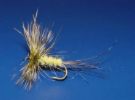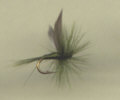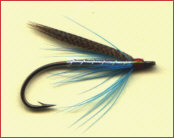|
Good fishing tackle is easy to come-by, excellent ones are rare
Conservation Because of such human activities as over fishing with fishing tackle such as fish nets, development, dam building, logging, and farm irrigation, Pacific salmon populations have greatly declined, and many species are now listed as rare and endangered. The United States and Canada negotiated a conservation agreement in 1999 that includes setting catch limits based upon ongoing scientific assessments of salmon population levels. In addition, multiple-approach conservation efforts are under way in Washington and Oregon states to restore the salmon runs. For reasons less well understood, and despite international conservation measures, Atlantic salmon populations have also sharply declined. The desirability of salmon as fish food has led to their being raised in aquaculture. Salmon Sockeye Species of salmon (Oncorhynchus nerka), widespread in the N Pacific Ocean and adjacent rivers; length up to 80 cm/32 in; feeds mainly on crustaceans during life at sea; migrates into fresh water to breed, the adults dying after spawning; an important commercial species along the American seaboard; also known as red salmon. (Family: Salmonidae.) Life Cycle The basic life pattern of the Salmonidae begins when, within the first year or two of life, the fish travels downstream to the sea, where it grows to its full size. After reaching maturity (one to nine years) it returns to its hatching site to spawn. The Pacific salmon are famed for their grueling journeys of hundreds of miles to their headwater breeding grounds. When they begin this trip they are in prime condition, but they cease eating when they leave the sea and arrive months later, exhausted and battered by their fight upstream against swift currents and over falls. Those that survive the trip and escape fishermen using sophisticated fishing tackle and predatory animals, spawn with their last strength and then die. These salmon are taken at the mouths of large rivers, as they begin their upstream migration. The Atlantic salmon and the trouts spawn more than once. Most trouts migrate to the sea if there is a cold-water connection, but also will sometimes live and reproduce if landlocked. Bass Bass, common name applied to various fishes of the families Serranidae (sea basses) and Centrarchidae (black basses and sunfishes). The sea basses are a large, diverse, and important family of perchlike fishes with oblong, rather compressed bodies. All basses are carnivorous and most are marine, although several species are found in freshwater (see sunfish). Sea basses inhabit warm and temperate seas throughout the world and are highly valued as game and food fishes. Along the Atlantic coast as far north as Cape Cod is found the common, or black, sea bass, a sluggish bottom fish averaging 6 lb (2.7 kg) in weight and 18 in. (45 cm) in length. Offshoots of the sea basses and classified with them are the white basses, including the striped bass (or rockfish) and the white perch, both found in fresh and brackish waters from Florida to Canada; the white bass of the Mississippi valley and the Great Lakes; and the similar but smaller yellow bass, found in the same range. The white sea bass of the N Pacific, however, is a member of the Sciaenidae family (see croaker). The Pacific sea basses include the giant sea bass, or Pacific jewfish, a bulky bottom fish that reaches a weight of 600 lb (270 kg) and a length of 7 ft (2.1 m), as well as the 2-ft (60-cm) kelp and sand basses. The so-called Chilean sea bass, or Patagonian toothfish (Dissostichus eleginoides), of the deep, cold waters of the Southern Hemisphere, is a member of the Nototheniidae family. The groupers are an important genus of large tropical sea basses. Very closely allied to the sea basses are the tripletail, with prominent anal and dorsal fins, and the robalo, or snook, widely distributed in tropical American salt waters. Basses are classified in the phylum Chordata, subphylum Vertebrata, class Osteichthyes, order Perciformes, families Serranidae and Centrarchidae. Fly lure Some important articials in your fishing tackle box. A fly lure, fly, or "pattern," in the terminology of sport fishing and fly fishing, fishing tackle such as artificial flies or lures tied, most commonly, with thread, feathers, and fur, but may also include lead (for weight), ribbon, tinsel, beads, and other assorted materials. Definition The term "fly lure" is not in use in the United States, where a lure is considered distinct from artificial flies in your fishing tackle. A lure, in this parlance, denotes only a fishing lure with enough weight to be thrown on conventional fishing tackle line. The artificial flies chief distinction is its lack of weight; one must use a fly rod to cast out the artificial flies because only a fly rod can be "loaded" or bent by a fly line, which provides the weight needed to carry out the fly. A fly rod is an other important piece in your fishing tackle items. Construction
Types of Fly Lure
Dry fly
Dry fly technique
Wet fly Fishing tackle meant to be fished below the surface.A wet fly resembles an insect under the water surface. Wet artificial flies can imitate aquatic insects, drowned insects, or emerging insects (emergers). They can also imitate larger aquatic creatures such as crawfish or leeches. Wet flies are traditionally tied with a tail, body, wings, and soft hackle. Wet fly technique Fishing tackle used in current, a wet fly may be fished upstream, across stream, or down stream. In slow pools on a large river, or in lake fishing the line may be retrieved slowly by a figure-of-eight retrieve (coiling the line in the palm of the hand). On still water, the wet fly may also be retrieved by this method, or by stripping line. Streamer Fishing tackle used for larger fish species.A streamer is a type of wet fly that can be used to mimic injured baitfish, such as minnows or menhaden. Streamers are normally larger in size than other types of artificial fly, and can be used to catch predatory fish of almost any size. Fish will bite streamers out of aggression while protecting spawning areas, out of curiosity, or when feeding. The big showy Atlantic Salmon flies, buck tails (hairwing), and feather wing artificial flies all fall into the streamer category. Streamer fly technique
Terrestrial Fishing tackle used both in and on top of water.A terrestrial fly is a fly tied to imitate a ground insect that has fallen in the water or has drowned. Prime examples of terrestrial flies include the ant, beetle, cicada, cricket, and grasshopper. Terrestrial technique
Nymph Fishing tackle for the bottom or that which floats.A nymph is a wet fly tied to imitate an emerging insect in its larval state or emerging from its larval cocoon. Mayfly nymphs, caddis fly larva, and diptera can all be imitated by nymphs. Normally a nymph is tied on a heavier hook, sometimes with an added weight in the body or head to keep it underwater during presentation. Nymph technique Nymphs can be fished successfully upstream or down. A large percentage of what fish eat is found living underwater and imitated by nymphs. Without the benefit of seeing the fly, the fly fisherman must distinguish a fish's take from the normal tug of river current. Many nymph fishermen rely on small bobbers, brightly-colored yarn, or other strike indicators to determine when a fish has taken the nymph.
Please feel free to join our discussion on the Blog. This is where we can share Info., Advice, Jokes and other useful stuff.
Click Here
Click to return from fishing tackle to fishing equipment
Please feel free to drop a line(no pun intended) on the forms about a fish story, be it a rescue, a near disaster or a happy story. It is your story and I will try to get them all on sometime. Even a good clean joke. These fishing links are only use to receive stories or comments concerning your story. Your e-mail will never be sold or use in anyway that will annoy or bother you. Thanks for the chance to hear from you.
LandBigFish.com Fishpond Large Mouth Bass Airport Parking Shop Boulder Outdoor Center Sports Packages
|
 Large, anadromous (ascending rivers to breed) fish (Salmo salar), widespread and locally common in the N Atlantic (Atlantic salmon) and in NW North America (Pacific salmon); length up to 1·5 m/5 ft; adults undertake extensive migrations at sea, feeding on a variety of fishes and crustaceans, returning to the headwaters of freshwater rivers to breed; greatly prized as game fish, and also taken commercially at sea; with the trouts and chars, comprise the very important family, Salmonidae.
Large, anadromous (ascending rivers to breed) fish (Salmo salar), widespread and locally common in the N Atlantic (Atlantic salmon) and in NW North America (Pacific salmon); length up to 1·5 m/5 ft; adults undertake extensive migrations at sea, feeding on a variety of fishes and crustaceans, returning to the headwaters of freshwater rivers to breed; greatly prized as game fish, and also taken commercially at sea; with the trouts and chars, comprise the very important family, Salmonidae.
 A fly tying kit should be added to the fishing tackle list. Tying artificial flies is a common practice in fly fishing, many anglers consider this an important part of the fly fishing experience. Many fly fishers tie their own artificial flies, either following patterns in books, natural insect examples, or using their own imagination. The technique involves attaching small pieces of feathers, animal fur, and other materials on a hook in order to make it attractive to fish. This is made by wrapping thread tightly around the hook and tying on the desired materials. A fly is sized according to the number size of its hook and length of shank: large or longer flies are tied on larger, thicker, and longer hooks. A fly tying kit is an other item for the fishermen's fishing tackle.
A fly tying kit should be added to the fishing tackle list. Tying artificial flies is a common practice in fly fishing, many anglers consider this an important part of the fly fishing experience. Many fly fishers tie their own artificial flies, either following patterns in books, natural insect examples, or using their own imagination. The technique involves attaching small pieces of feathers, animal fur, and other materials on a hook in order to make it attractive to fish. This is made by wrapping thread tightly around the hook and tying on the desired materials. A fly is sized according to the number size of its hook and length of shank: large or longer flies are tied on larger, thicker, and longer hooks. A fly tying kit is an other item for the fishermen's fishing tackle. Concerning fishing tackle, generally, fly patterns are considered either "imitations" or "attractors." Imitations seek to deceive fish through the life-like imitation of insects on which the fish may feed. Artificial flies do not always have to be precisely realistic in appearance; they may derive their lifelike qualities when their fur or feathers are immersed in water and allowed to move in the current. Artificial flies, which are often brightly colored, seek to draw a strike by arousing an aggression response in the fish. Famous Artificial flies are the Stimulator, Royal Wulff, and Green Weenie flies.There are five main categories of artificial flies: dry fly, wet fly, streamer fly, terrestrial, and nymph . Some fly patterns may fall into several categories. For example, the Wooly Bugger is precisely imitative of very few creatures, yet can be fished as a nymph, a streamer, or as a wet fly imitation of a crawfish or leech.
Concerning fishing tackle, generally, fly patterns are considered either "imitations" or "attractors." Imitations seek to deceive fish through the life-like imitation of insects on which the fish may feed. Artificial flies do not always have to be precisely realistic in appearance; they may derive their lifelike qualities when their fur or feathers are immersed in water and allowed to move in the current. Artificial flies, which are often brightly colored, seek to draw a strike by arousing an aggression response in the fish. Famous Artificial flies are the Stimulator, Royal Wulff, and Green Weenie flies.There are five main categories of artificial flies: dry fly, wet fly, streamer fly, terrestrial, and nymph . Some fly patterns may fall into several categories. For example, the Wooly Bugger is precisely imitative of very few creatures, yet can be fished as a nymph, a streamer, or as a wet fly imitation of a crawfish or leech. Dry flies are fishing tackle that are meant to float. A dry fly resembles an insect floating on the water surface. Larger artificial flies can also imitate mice, frogs, and snakes, or they may use attractor patterns often found in such lures as the bass popper. A small dry fly is often tied on a light hook so it can float easily. Larger artificial flies may derive their flotation from the use of body materials such as foam or cork.A dry fly may be tied to imitate an insect on the water, such as Pale Morning Duns, or it may be tied to attract rising fish without imitating any one specific insect, such as the Royal Wulff or Adams patterns. The traditional artificial flies have a few basic parts: tail, body, wing, hackle, and head. Flotation of the artificial flies can be achieved in a variety of ways. A dry fly traditionally uses the surface tension of water to float. The fly will ride on the hackle and tail, and in some cases the hook point will not break through the surface. Closed-cell foam, hollow deer hair, or CDC feathers can be used in construction to hold molecules of air and enable the fly to float. Some types of dry artificial flies must be lubricated with a special floatant before presentation and dried regularly to preserve buoyancy.
Dry flies are fishing tackle that are meant to float. A dry fly resembles an insect floating on the water surface. Larger artificial flies can also imitate mice, frogs, and snakes, or they may use attractor patterns often found in such lures as the bass popper. A small dry fly is often tied on a light hook so it can float easily. Larger artificial flies may derive their flotation from the use of body materials such as foam or cork.A dry fly may be tied to imitate an insect on the water, such as Pale Morning Duns, or it may be tied to attract rising fish without imitating any one specific insect, such as the Royal Wulff or Adams patterns. The traditional artificial flies have a few basic parts: tail, body, wing, hackle, and head. Flotation of the artificial flies can be achieved in a variety of ways. A dry fly traditionally uses the surface tension of water to float. The fly will ride on the hackle and tail, and in some cases the hook point will not break through the surface. Closed-cell foam, hollow deer hair, or CDC feathers can be used in construction to hold molecules of air and enable the fly to float. Some types of dry artificial flies must be lubricated with a special floatant before presentation and dried regularly to preserve buoyancy. In order for the artificial flies float tantalizingly on the water surface, it may require periodic drying after it is pulled from the water. This is accomplished by several rapid strokes or whips of the airborne fly and fly line, called "false casting". Another method is to press the dry fly into amadou or other desiccant to remove absorbed water. Artificial flies may be fished upstream or downstream. Casting upstream generally keeps the angler out of the view of the fish while casting downstream may facilitate casting to productive holes.
In order for the artificial flies float tantalizingly on the water surface, it may require periodic drying after it is pulled from the water. This is accomplished by several rapid strokes or whips of the airborne fly and fly line, called "false casting". Another method is to press the dry fly into amadou or other desiccant to remove absorbed water. Artificial flies may be fished upstream or downstream. Casting upstream generally keeps the angler out of the view of the fish while casting downstream may facilitate casting to productive holes. The fishing technique with a streamer is much the same as with a spoon lure. Casting across and downstream is the traditional presentation. Retrieves can be fast or slow and erratic to imitate an injured baitfish.
The fishing technique with a streamer is much the same as with a spoon lure. Casting across and downstream is the traditional presentation. Retrieves can be fast or slow and erratic to imitate an injured baitfish. Terrestrials may be tied as dry or wet flies, and are fished appropriately. However, since terrestrial insects are not accustomed to the water, delicate presentations are not usually necessary. For example, a terrestrial cricket or grasshopper lands hard on the water, where it struggles to extricate itself. Wet fly terrestrials imitate drowned or drowning ground insects, and are therefore normally fished in a dead drift without movement.A live earth worm is a good example of a terrestrial applaction.
Terrestrials may be tied as dry or wet flies, and are fished appropriately. However, since terrestrial insects are not accustomed to the water, delicate presentations are not usually necessary. For example, a terrestrial cricket or grasshopper lands hard on the water, where it struggles to extricate itself. Wet fly terrestrials imitate drowned or drowning ground insects, and are therefore normally fished in a dead drift without movement.A live earth worm is a good example of a terrestrial applaction.